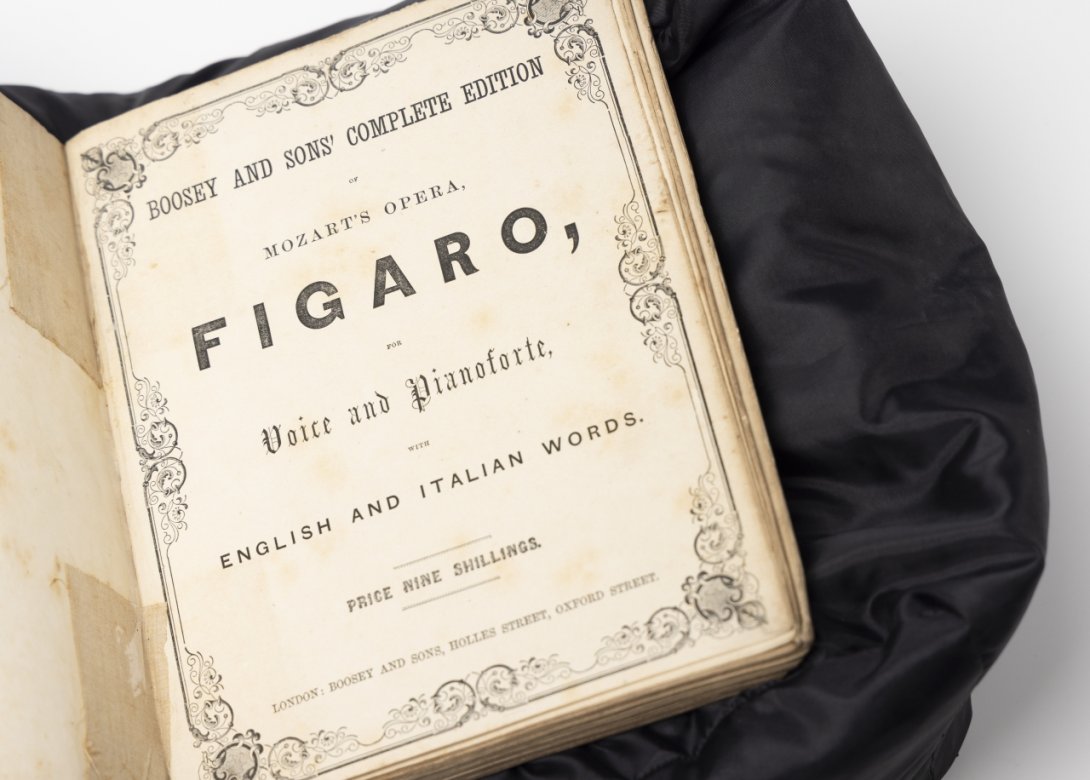
Two operas featuring a wily barber called Figaro are among the most beloved and performed works for the stage: Mozart's The Marriage of Figaro (1786) and Rossini's The Barber of Seville (1816). They are comedic and include some of the most buoyant, melodious and beautifully-crafted music ever composed.
The character of Figaro, however, was created years earlier by Pierre-Augustin Caron de Beaumarchais (1732–1799). Figaro features in three of Beaumarchais' plays for the French stage: The Barber of Seville (1775), The Marriage of Figaro (first performed in 1784, published in 1785) and The Guilty Mother (first performed in 1792, published in 1793). Figaro is a survivor, who makes his way in the world with confidence and charm.
In addition to a strong Music Collection, the National Library of Australia has rich and rare collections of French-language printed books, plays and pamphlets. Of more than 186,500 titles in French in our collections, nearly 18,880 are in our Rare Books Collections. In 1963 and 1976, the Library acquired two major collections of French plays, published between 1700 and 1840. Together, they number 2,457 plays.
This blog shows what the Library's rare books and music collections can do when searching for Figaro.
Beaumarchais and his Figaro plays
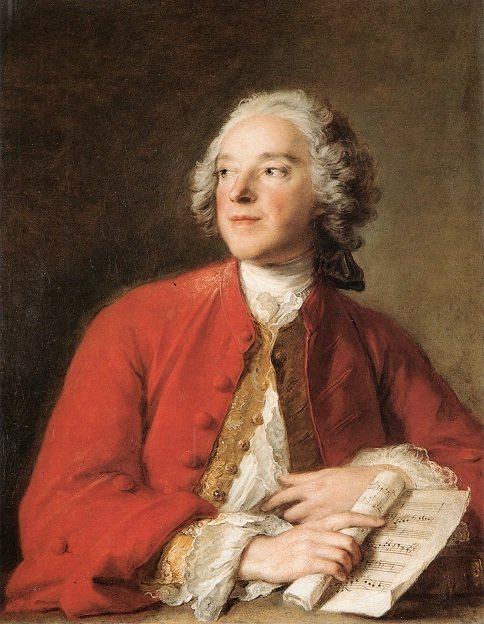
Figaro's creator, the Frenchman Pierre-Augustin Caron de Beaumarchais (1732–1799), is often described as a polymath and ambitious self-promoter. He was an idealist, who lived a life of adventure and drama. Pierre-Augustin was born in Paris, the son of a watchmaker. His family name was Caron–Beaumarchais was his own, later invention–and they were Huguenots (French Protestants) who had converted around the time of the revocation of the Edict of Nantes in 1685. (The edict had protected Huguenots from persecution for almost a century.) He served an apprenticeship to his father, and later invented an escapement (or timekeeping mechanism) called a double virgule, designed to make a pocket watch keep time more accurately. His invention and defence of it brought him to the attention of King Louis XV and the younger Caron became harp teacher to the king's daughters. The above portrait dates from around this time. The future playwright holds a rolled music score.
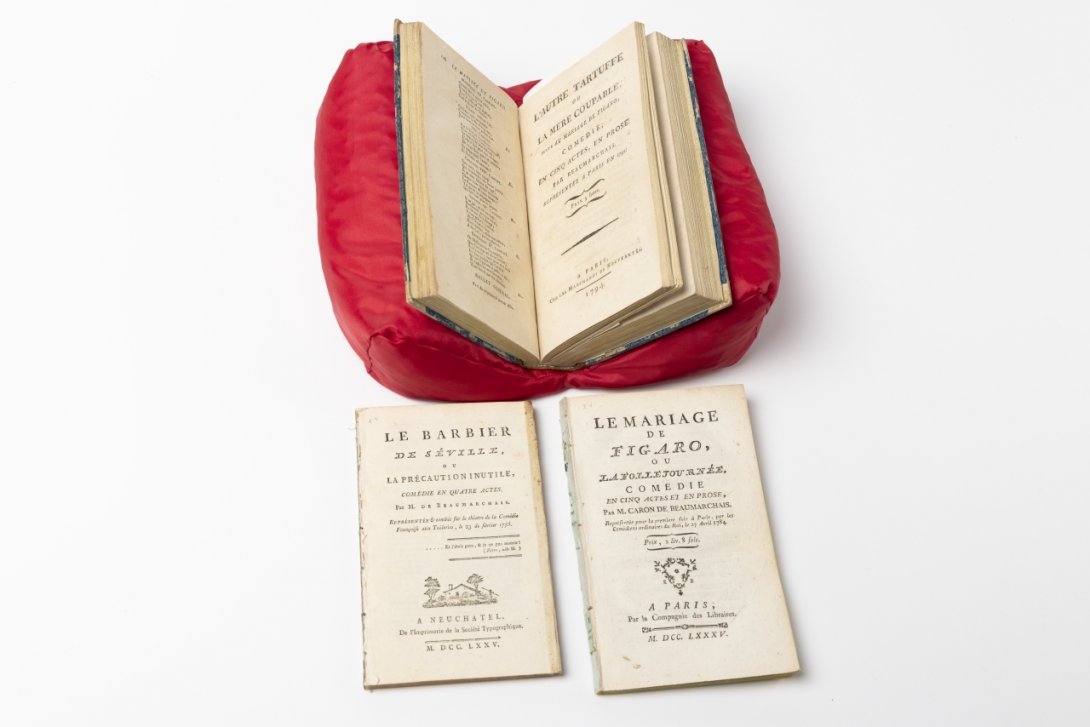
By the later 1760s, however, Beaumarchais had moved on to playwriting. The Library holds early editions of all six of his full-length plays, some in multiple editions. The three Figaro plays were first performed between the 1770s and the 1790s, yet they are still regularly performed in France, where they are also part of the school curriculum.
The Barber of Seville, the play
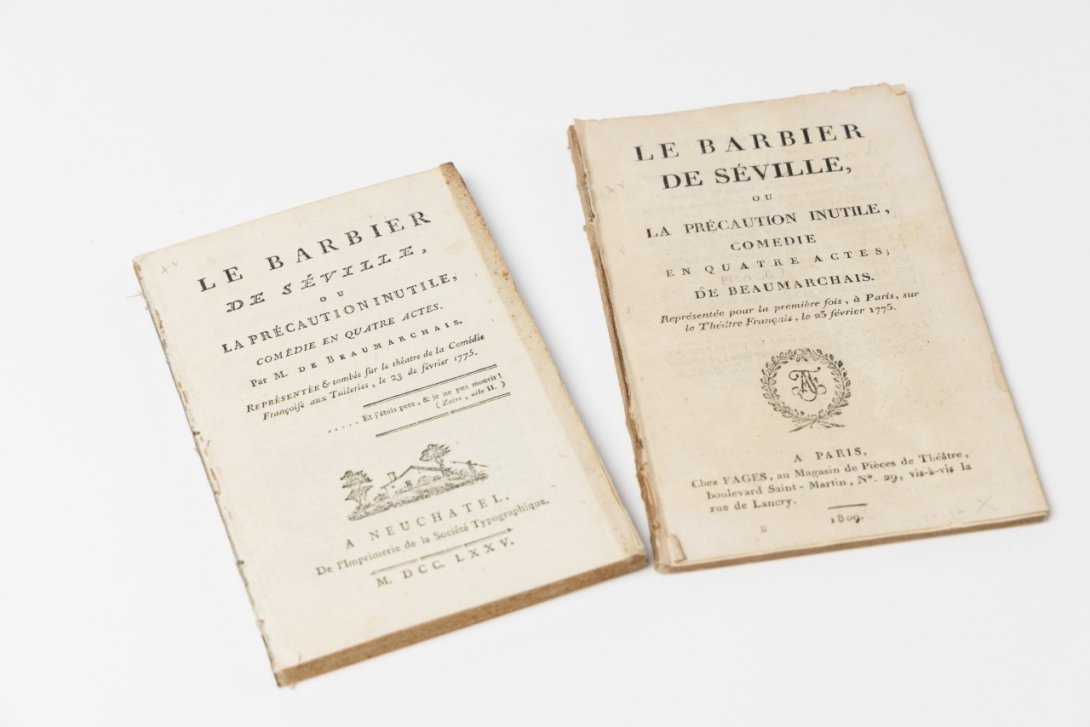
Le Barbier de Seville ou la Précaution Inutile (The Barber of Seville or the Useless Precaution) (1775) is Beaumarchais' first Figaro play. Figaro is working as a barber in Seville, and is called on to help his former employer/master, the Count Almaviva, who is in love with Rosina, but unsure she loves him for himself. It is in the tradition of commedia dell'arte, a form of popular Italian theatre characterised by improvisation and an ensemble company, with stock characters. The play was first performed in Paris by the Comédie Française, one of three officially licensed theatre companies, at the theatre of the Tuileries Palace, the royal palace just near the Louvre. (The palace was destroyed by fire in the late 19th century, and later demolished. The site of the palace is now the Jardin des Tuileries, a large public space, with gardens, fountains and seating.) The play became a great success.
The Library holds a couple of 1775 printed editions, as well as slightly later editions.
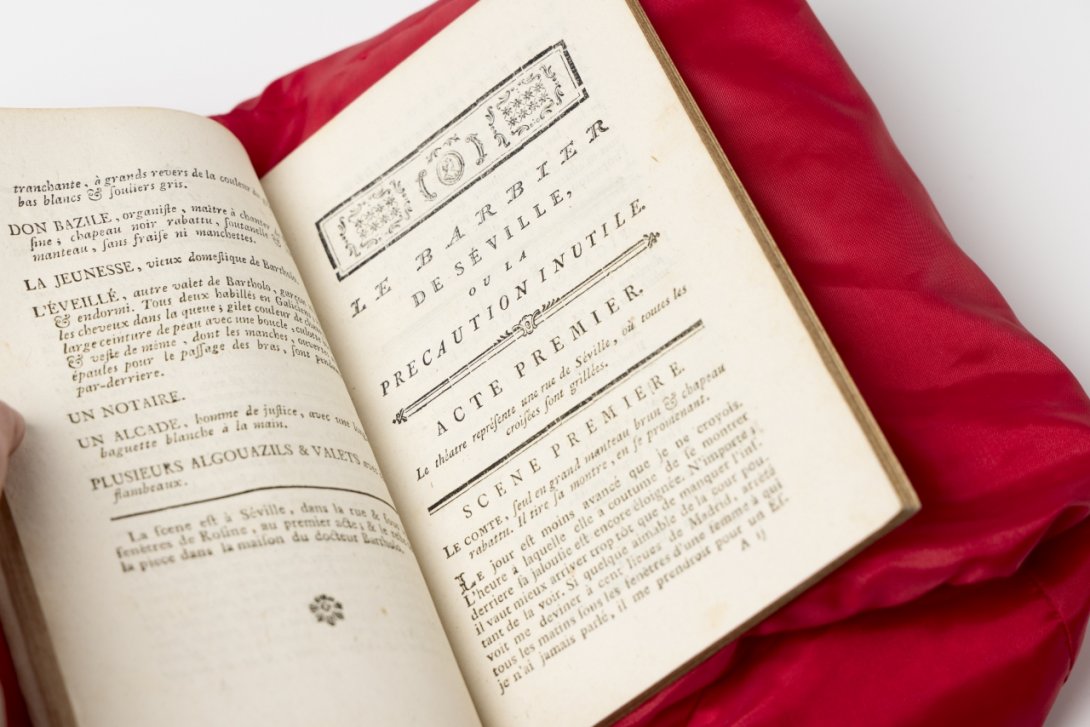
The Barber of Seville, the opera
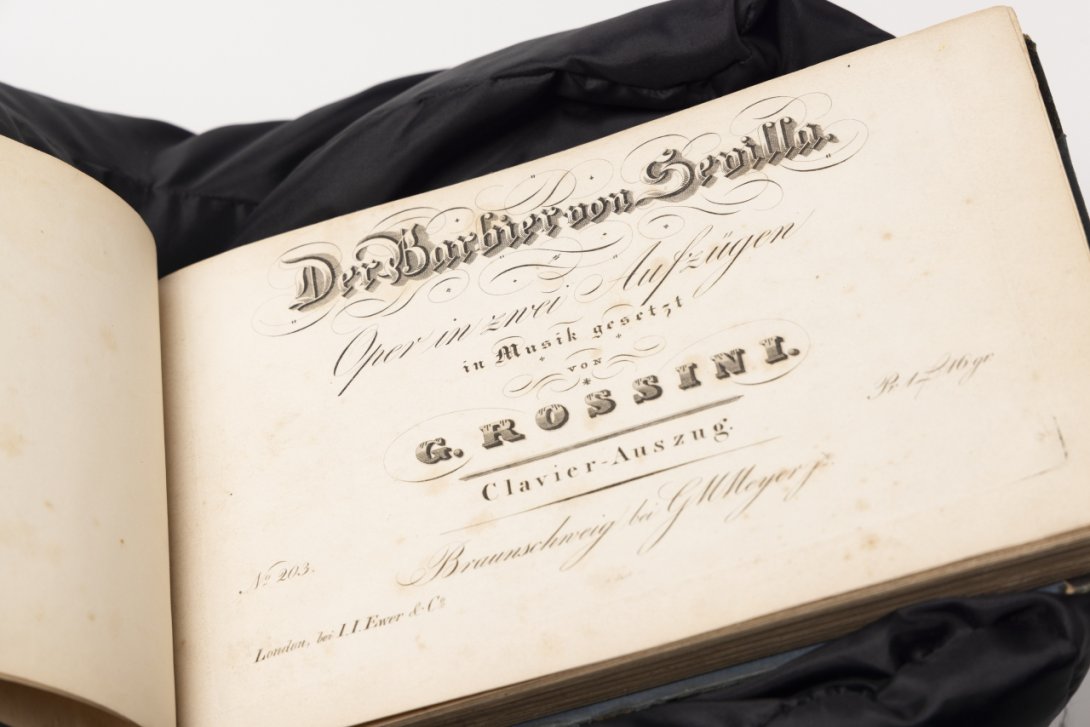
In the 18th century, the play was recast as an opera by several composers including Giovanni Paisiello. Yet it is Italian composer Gioachino Rossini's version that is best known and performed today. Rossini was nearly 24 when the opera was first performed in Rome in 1816. He is said to have written out the opera in thirteen or even as few as nine days.
The opera is known for its wit and brilliance. In 1898, the great Giuseppe Verdi described it as the most beautiful comic opera (opera buffa in Italian): 'for the abundance of true musical ideas, for its comic verve and the accuracy of its declamation, is the most beautiful opera buffa there is.'
The Library holds scores of the opera in its Music Collections. We will explore some of them here.
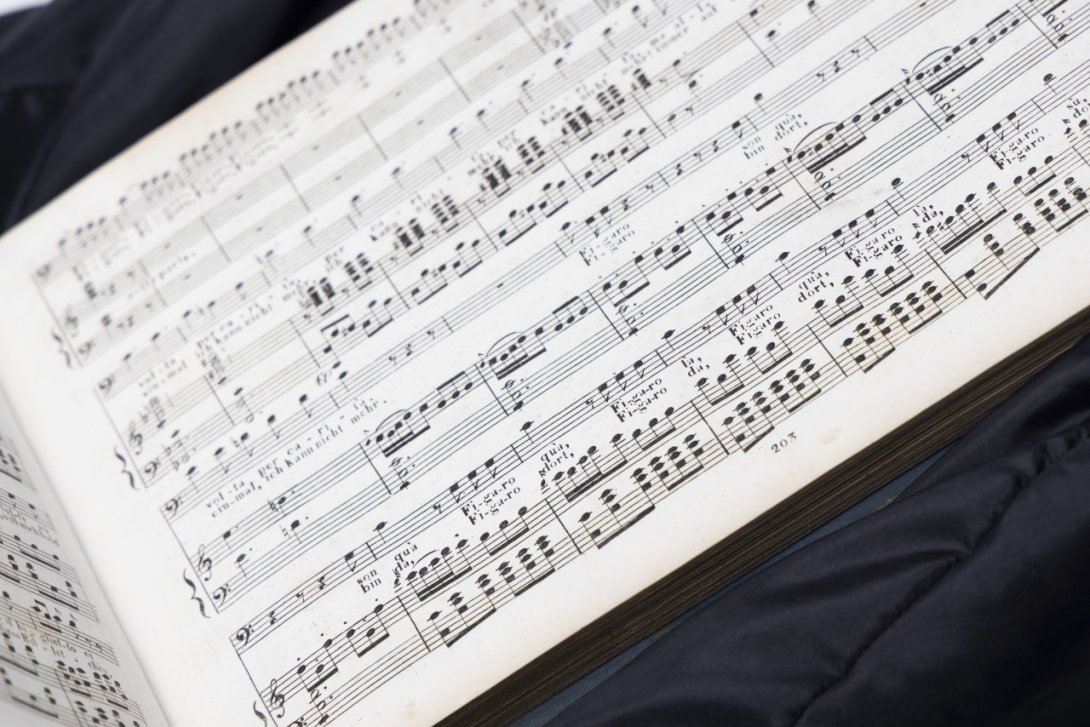
This, from the same German edition you see immediately above, is Rossini's famous aria (or cavatina) for Figaro 'Largo al factotum' (Make way for the factotum). It is a showy introduction to the barber, a chance for the singer to demonstrate his vocal acrobatics.
Make way for the servant of the city.
Early to the shop as dawn is already here.
Ah, what a beautiful life, what a pleasure
For a barber of quality!
Ah, well done Figaro!
Good, very good!
Very lucky indeed!
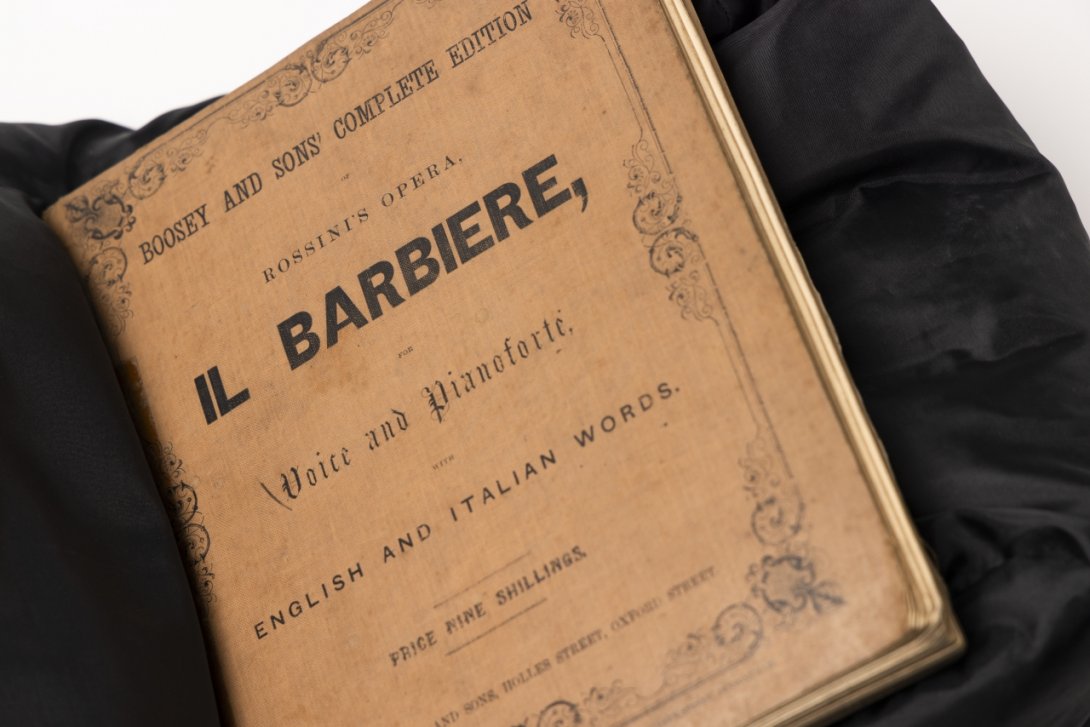
London music publishers Boosey and Sons published affordable editions of major operas for voice and piano accompaniment (also known as vocal scores), around the middle of the 19th century.
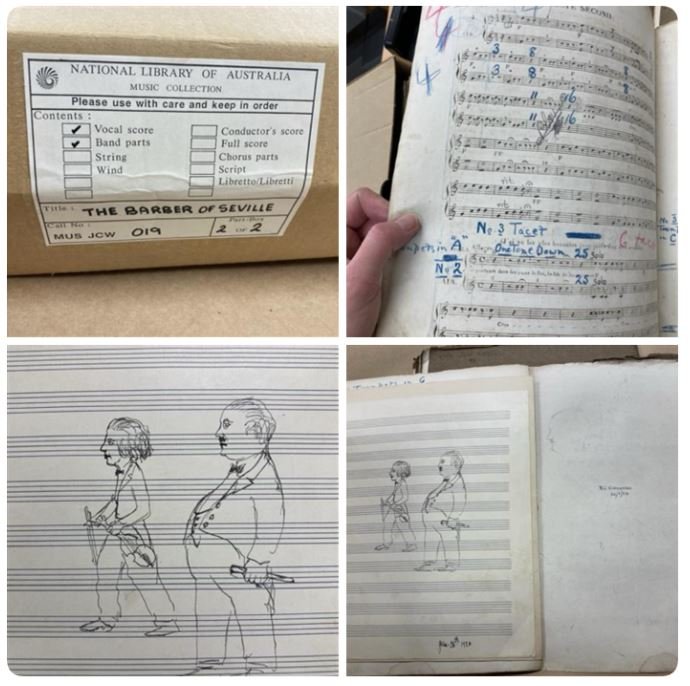
The production box for The Barber of Seville in the Library's J.C. Williamson Collection includes scores for voice, the conductor and the orchestra. Annotations and doodles confirm that they were likely assembled and definitely used in the 1920s. They are mostly printed, with some manuscript scores inserted, and they are marked up with blue and red pencil. (It was long before highlighters!) At the rear of the trumpet part, are a couple of caricatures, presumably of other members of the orchestra. The artist, most likely a trumpeter, has signed and dated his caricature: 'R.G. OSBOURNE', 'Jan. 26th 1924'. We know that in 1924, J.C. Williamson, Australia's major commercial promoter through most of the 20th century, had a Grand Opera Season, and The Barber of Seville was performed throughout Australia as part of that. The Opera Season featured both Australian opera diva Dame Nellie Melba and acclaimed Italian opera stars.
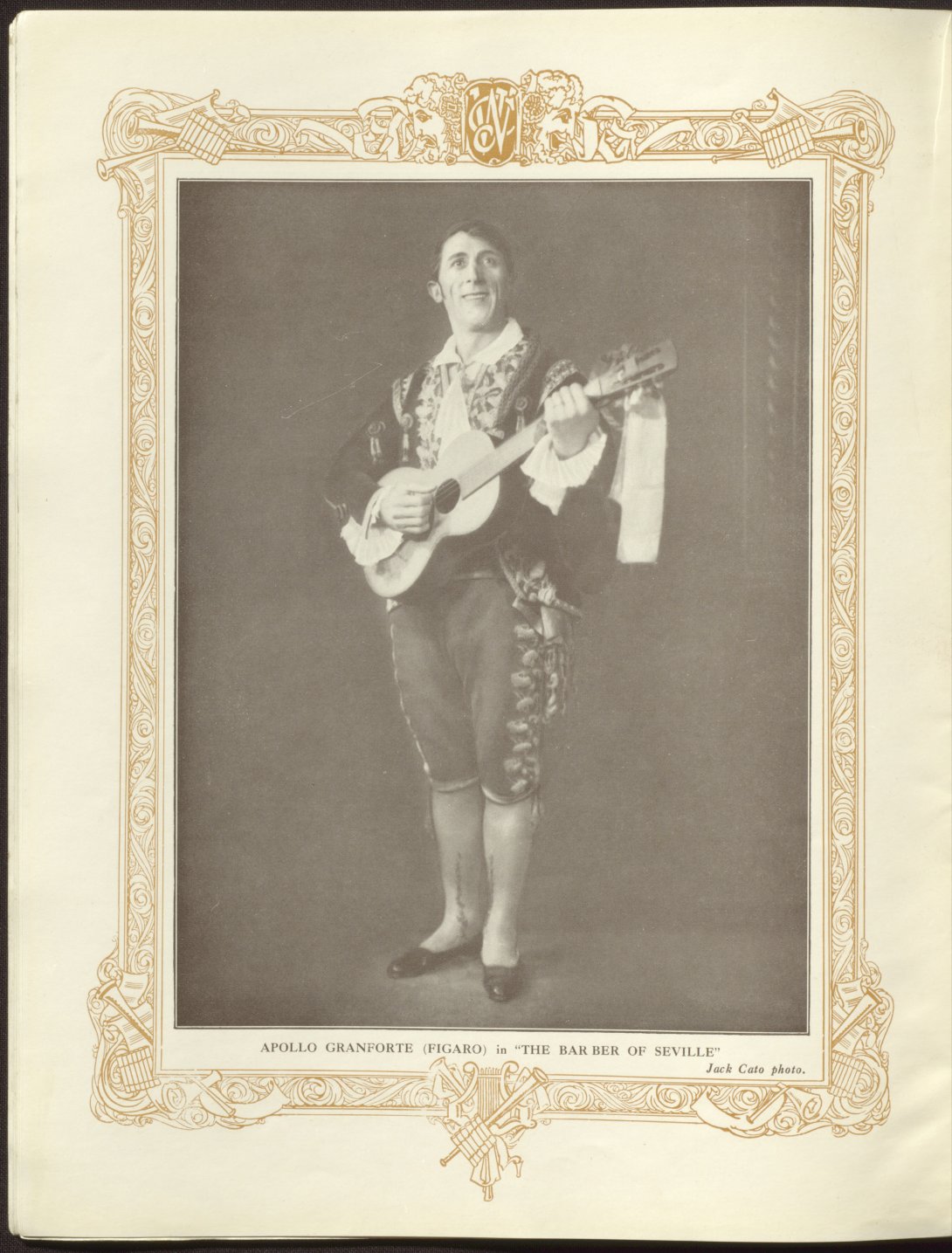
One of the stars of the 1924 and 1928 seasons was Apollo Granforte (1886–1975), the Italian-born baritone. In 1928, he played Figaro in The Barber of Seville. The Library recently digitised its extensive collection of J.C. Williamson programs. Those for opera, comic opera and operetta are here.
The Marriage of Figaro, the play
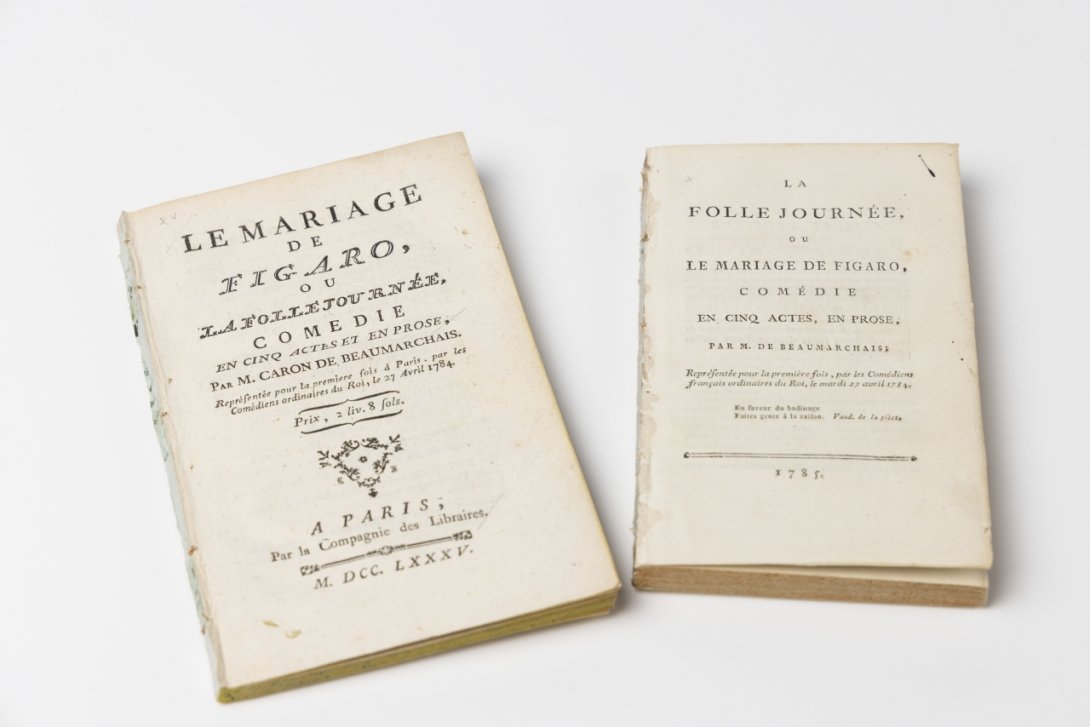
In La Folle Journée ou Le Mariage de Figaro (The Mad Day or the Marriage of Figaro), Beaumarchais returns to Figaro several years after the action of The Barber of Seville. Figaro is now working in the household of the Count and Countess Almaviva. All is not well between the noble couple, and Figaro has his own romantic storyline with the Countess' maid Susanna.
The play was first performed in 1784, but not published until 1785. It challenged the social order by making the servants more intelligent than their employers. King Louis XVI banned the play saying, eerily, that 'the Bastille would have to be pulled down before such a play was staged'. The Queen, Marie Antoinette, took a different view and even acted in a performance.
About 20 different editions of the play were printed in 1785. We have two, slightly different copies.
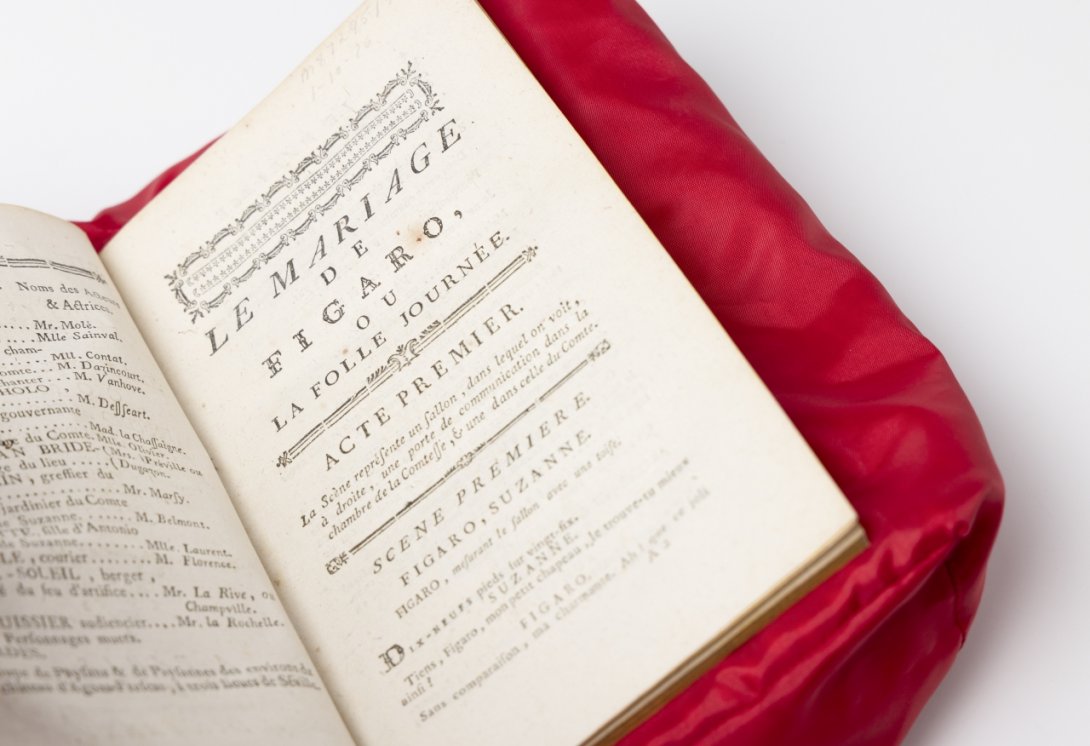
The Marriage of Figaro, the opera
Wolfgang Amadeus Mozart’s The Marriage of Figaro is one of the world’s most-loved operas. With great spirit, energy and pathos, Mozart reimagines in music the lusty Count Almaviva and the despondent Countess, their crafty valet Figaro, practical maid Susanna and amorous pageboy Cherubino as they wend their way through that ‘mad day’. Mozart's opera was first performed in Vienna in 1786. It was well-received, but only performed nine times in its first season. With a libretto by Lorenzo da Ponte, Mozart's opera reduces Beaumarchais' five act play to four, takes the focus from Figaro and places more emphasis on the Count and Countess.
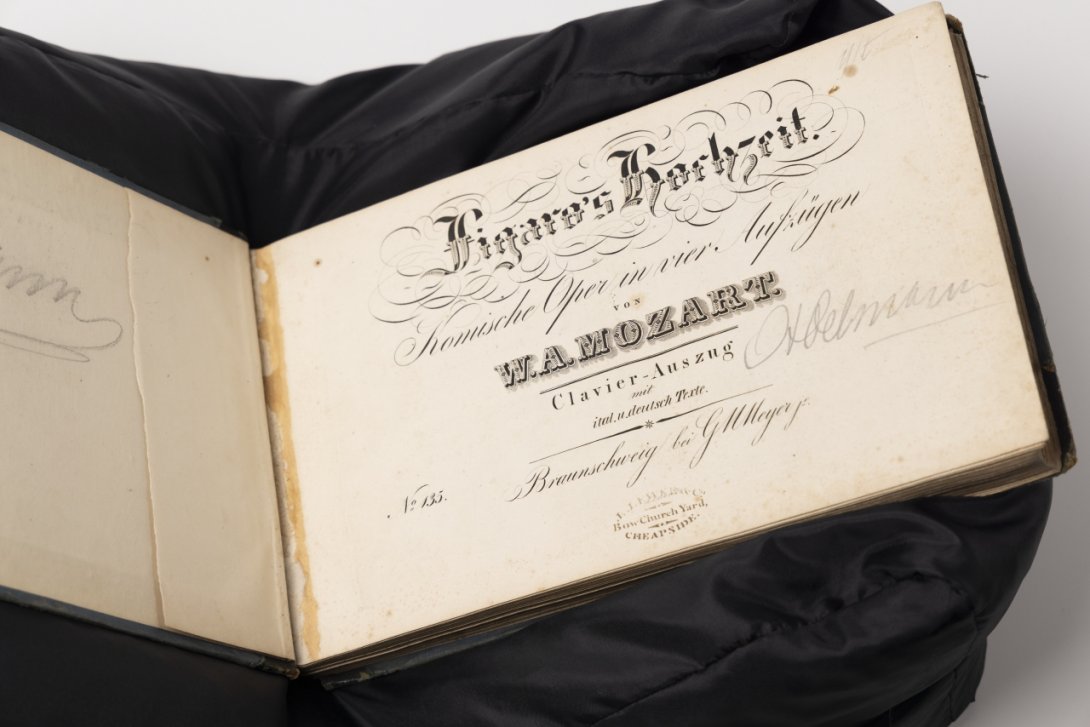
This German edition of the opera score is for piano and voice and includes the words in Italian and German. An ink stamp on the title page shows that it was sold in London at the Cheapside shop of J.J. Ewer & Co., a music retailer and publisher. It must have been sold up to or including 1841, as Ewer changed premises then.
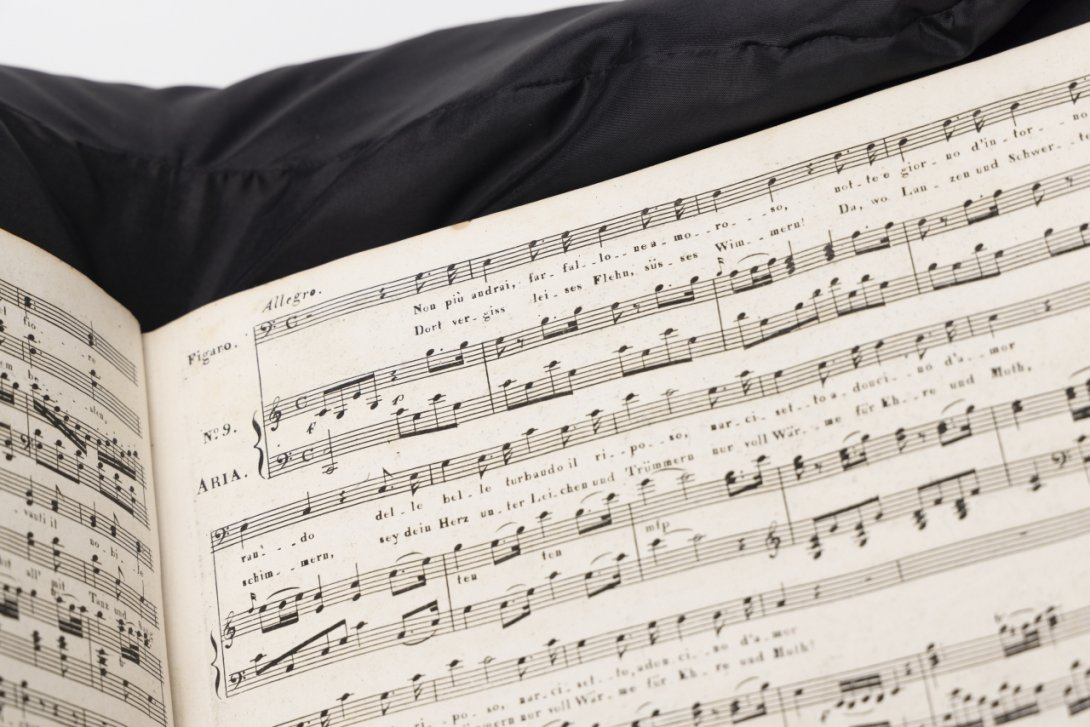
'Non piu andrai' is Figaro's star aria in Mozart's opera. Figaro gives advice to the young, aspiring soldier Cherubino.
You will not go anymore, amorous butterly,
Turning around inside night and day,
Disturbing the rest of beauties,
A little Narcissus and little Adonis of love,
You will not have those fine feathers anymore,
That hat light and gallant
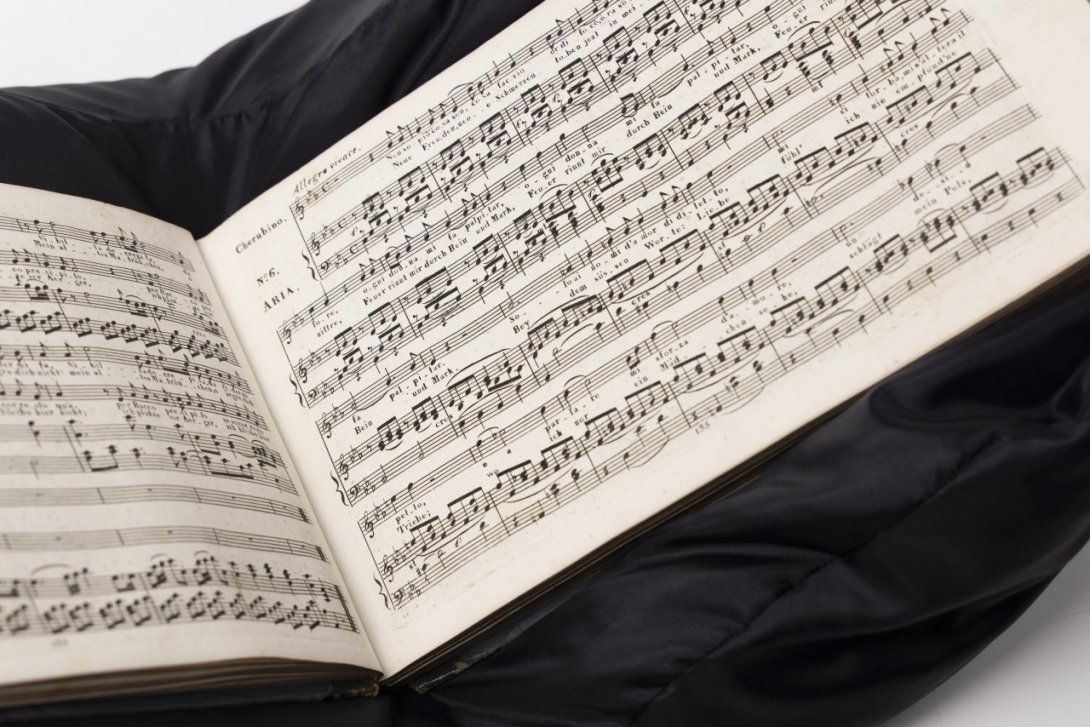

The Library also holds the Boosey and Sons edition of The Marriage of Figaro.
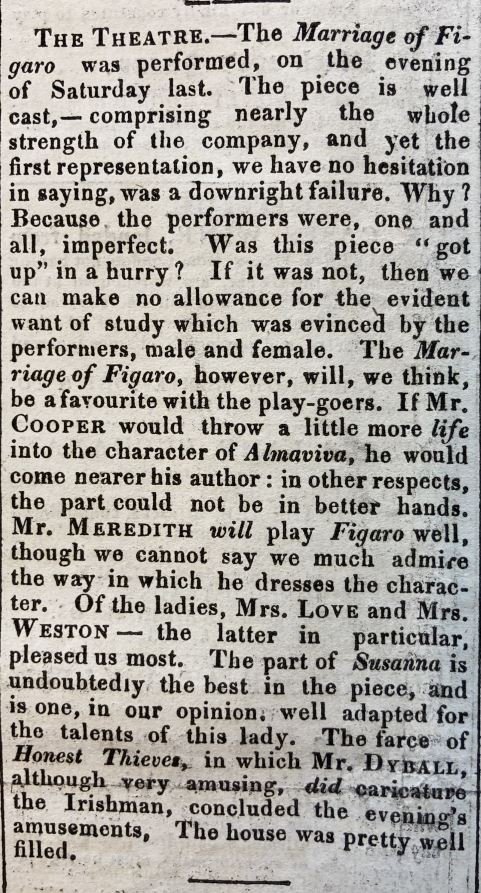
This is a scathing but optimistic review of one of the earliest Australian performances of Mozart's The Marriage of Figaro in May 1833. It opened in a new theatre in Sydney: the Theatre Royal on George Street, between King and Market Streets. This theatre was run by Barnett Levey (1798–1837).
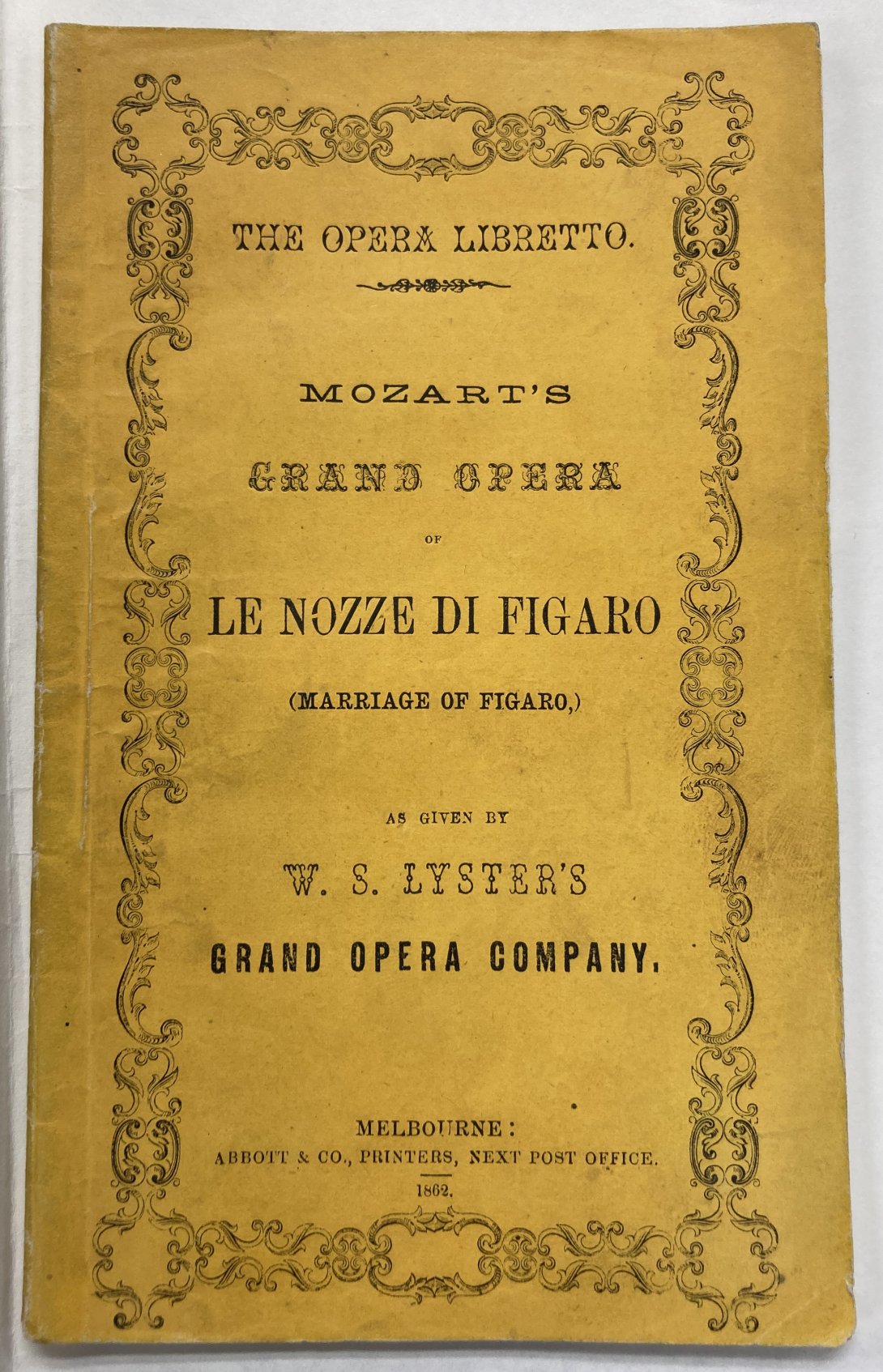
In the 1860s, William Lyster's company performed The Marriage of Figaro around Australia. Lyster's was Australia's first longterm opera company. The Library holds several libretti for these performances. Each has a very bright paper binding.
The Guilty Mother, the play
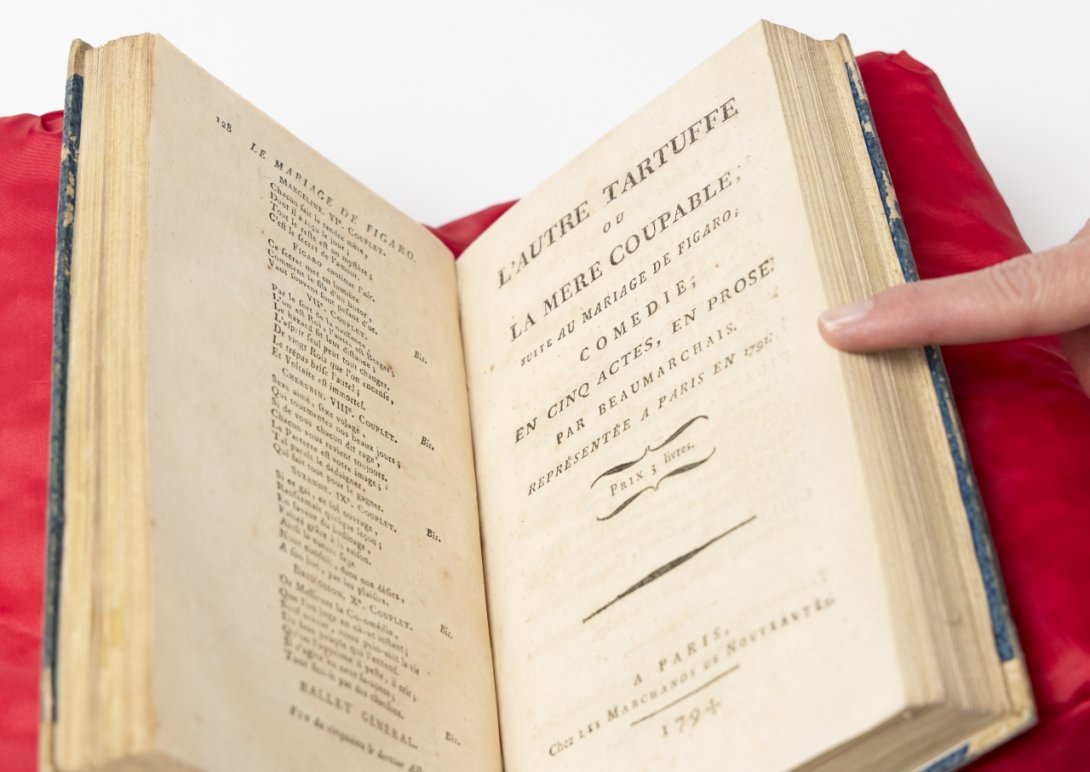
Beaumarchais returned to Figaro in the early 1790s, during the French Revolution. The play was staged in 1792, and our copy was published in 1794, after Louis XVI and Marie Antoinette had been executed. The action takes place 20 years after The Marriage of Figaro, with Figaro and Susanna now married and still working for the Almavivas. The Count is uncertain whether he is the father of his son (he is not, the Countess and Cherubino had an affair); and he has had his own daughter from an extramarital affair. The two children fall in love with each other and Figaro and Susanna try to keep the peace. The play is little known but has been performed to some acclaim in France.
Beaumarchais, the provocateur
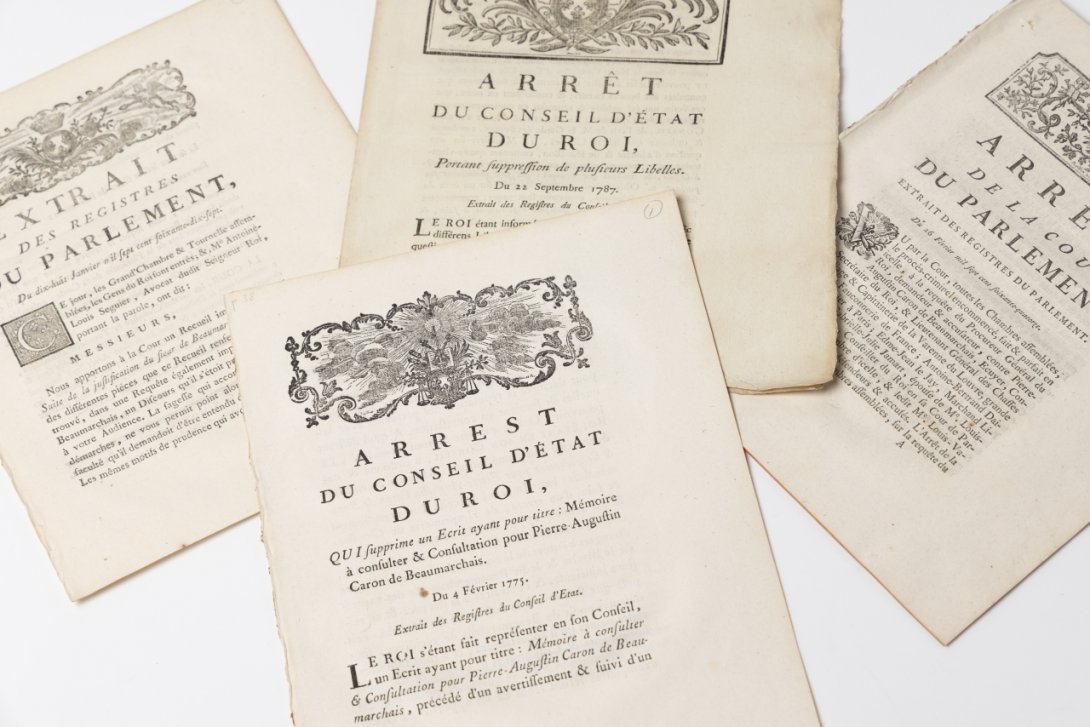
Beaumarchais was a political figure. His plays, though popular, were critical of the status quo and the ruling class in particular. He also had a litigious disposition and a complicated private life.
The Library's collections include printed material documenting Beaumarchais' involvement with the law and authorities. Our Jammes Collection, which spans 453 items and once belonged to Paris rare bookseller Paul Jammes (1890–1983), includes pamphlets relating to Beaumarchais' legal troubles between the 1770s and 1790s. The Library also holds his Memoires (1777), which give an insight into this side of his life.
Beaumarchais was also interested in printing. He acquired the type (punches) created by John Baskerville (1707–1775), the maverick British printer and typefounder who co-invented the kind of paper we use today. Indeed some of our rare books were printed under Beaumarchais' direction. Between 1784 and 1789, Beaumarchais printed the complete works of Voltaire, another 18th-century polymath, using Baskerville's type: the Library has all 70 volumes in the collection.
The Library's pictorial, manuscript and ephemera collections also document the performance of the operas based on Beaumarchais' plays in Australia. But that is a topic for another day.
The printed traces of Beaumarchais' life and works, as well as Mozart's and Rossini's Figaro operas, are just one story that our rare books and music collections can tell. Our collections show how one of the most beloved characters of the stage first appeared in print and evolved, and illumine the intriguing man behind him. All without going to France! Learn more about accessing our collections.
Dr Susannah Helman is Rare Books and Music Curator, National Library of Australia